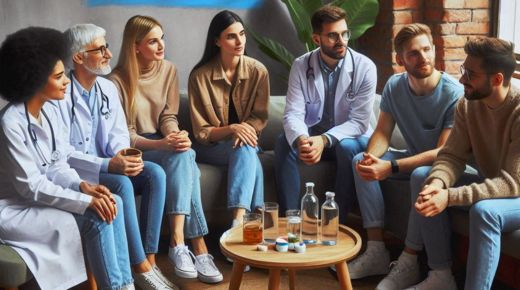1. Introduction to Lichen Amyloidosis
Lichen amyloidosis is a chronic skin condition characterized by the accumulation of amyloid deposits in the skin, leading to persistent itching and the formation of small, raised papules.
2. Prevalence in India
Lichen amyloidosis is relatively common in India, particularly among individuals with darker skin tones.
3. Symptoms of Lichen Amyloidosis
Symptoms of lichen amyloidosis include intense itching, especially in the evenings and at night, and the appearance of small, brownish papules on the skin, typically on the shins, thighs, or back.
4. Diagnosis
Diagnosis of lichen amyloidosis is usually based on clinical evaluation, skin biopsy, and histopathological examination, which reveal characteristic findings of amyloid deposits in the skin.
5. Treatment Approach
Treatment for lichen amyloidosis aims to alleviate symptoms, reduce itching, and improve the appearance of the skin lesions.
6. Topical Therapies
Topical therapies such as corticosteroid creams or ointments, emollients, and antihistamines may provide relief from itching and help reduce inflammation.
7. Phototherapy
Phototherapy, including narrowband ultraviolet B (NB-UVB) therapy, may be effective in reducing itching and improving the appearance of skin lesions in lichen amyloidosis.
8. Oral Medications
Oral medications such as antihistamines, tricyclic antidepressants, or gabapentin may be prescribed to help relieve itching and discomfort associated with lichen amyloidosis.
9. Cryotherapy
Cryotherapy, which involves freezing the affected skin lesions with liquid nitrogen, may be used to remove individual papules and improve the cosmetic appearance of the skin.
10. Laser Therapy
Laser therapy, such as pulsed dye laser or fractional laser treatment, may be considered for the treatment of lichen amyloidosis to target blood vessels and reduce inflammation.
11. Combination Therapies
Combination therapies involving a combination of topical medications, phototherapy, and oral medications may be used to achieve better outcomes in the treatment of lichen amyloidosis.
12. Surgical Excision
Surgical excision of individual skin lesions may be considered in cases where other treatment modalities have failed to provide adequate relief or for cosmetic reasons.
13. Ayurvedic Treatment
Some individuals with lichen amyloidosis may seek Ayurvedic treatment options, which may include herbal remedies, dietary modifications, and lifestyle changes aimed at restoring balance to the body.
14. Home Remedies
Home remedies such as oatmeal baths, cool compresses, and wearing loose-fitting clothing made from natural fibers may help alleviate itching and discomfort associated with lichen amyloidosis.
15. Importance of Sun Protection
Protecting the skin from sun exposure is essential for individuals with lichen amyloidosis, as sunlight can exacerbate itching and inflammation and worsen skin lesions.
16. Patient Education
Educating patients about the triggers and management strategies for lichen amyloidosis can help empower them to take control of their condition and improve their quality of life.
17. Follow-Up Care
Regular follow-up with a dermatologist or healthcare provider is essential for monitoring the progression of lichen amyloidosis, adjusting treatment as needed, and addressing any complications or concerns.
18. Supportive Care
Providing supportive care and resources for individuals with lichen amyloidosis, including access to support groups, counseling services, and educational materials, can help improve coping and adjustment to living with the condition.
19. Research and Innovation
Ongoing research into the pathogenesis of lichen amyloidosis and the development of novel treatment modalities offer hope for improved outcomes and quality of life for affected individuals.
20. Collaboration Among Healthcare Professionals
Collaboration among dermatologists, allergists, immunologists, and other healthcare professionals is crucial for delivering comprehensive care to individuals with lichen amyloidosis and addressing the multifaceted aspects of the condition.
21. Public Awareness
Raising public awareness about lichen amyloidosis, its symptoms, and available treatment options is essential for early recognition, accurate diagnosis, and timely intervention.
22. Government Policies
Government policies supporting research, education, and access to healthcare services for individuals with rare skin disorders like lichen amyloidosis can help improve outcomes and quality of life for affected individuals.
23. Advocacy Efforts
Advocacy efforts aimed at promoting awareness, funding research, and improving access to care for individuals with lichen amyloidosis are crucial for addressing the global burden of the condition.
24. Empowerment Through Knowledge
Empowering individuals with knowledge about lichen amyloidosis and available resources can help them advocate for their healthcare needs and make informed decisions about their care.
25. Conclusion: Moving Forward with Hope
In conclusion, while lichen amyloidosis can pose challenges, a multidisciplinary approach to treatment, patient education, and ongoing research offer hope for improved outcomes and quality of life for affected individuals in India.




